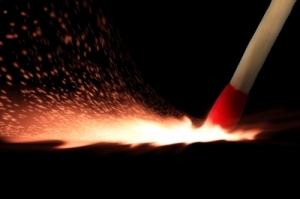“We must never forget that the highest appreciation
is not to utter words, but to live by them.”
John F. Kennedy
I was recently faced with another “aha moment”.
Anyone familiar with my writing will know I’m not terribly interested in ahas. They tend to stop energy rather than moving it, because when something is new we fixate on and tense around it. The mind starts running in a loop around it, going “it works it works it works!” without actually applying it to action. Then, after a week or two, the mind has fully thought it to death and it loses any power to help us.
The ones that cause the most excitement tend to come around the things we are most stuck on. For example, my recent “aha” centered on my chronic issues with inertia.
What happens is I fall into a little ditch and find it intensely comfortable. There’s TV here, and sleeping in. An inner permission to do nothing and with it the forgetting of all the to-do list items that can be so annoying.
I’ve already solved this problem multiple times over in a variety of ways with measurable success, but I still struggle.
Then, Aha.
Seeing the inertia as a ditch invited the idea of giving myself a ladder with which to climb out. That is, giving myself first one thing to do that’s below my threshold of resistance but gets me moving, followed by another, and on until I’m up and fully running again.
Then, because once I get going I can have trouble stopping (inertia again), I give myself a series of tasks to help me wind down mindfully.
This worked so well the first day or two I tried it I started thinking about it all the time, until I noticed I was no longer actually using it.
When something is actually working for us it requires no thought at all. It drops into the background of life, working on a deep level beyond our conscious attention.
When I started flossing my teeth every night and making my bed every morning, there was no great push on my part to do it. Something clicked that it wasn’t a choice and I never needed to think about it again.
So how do I make sure a great, useful idea like “little ladders” will actually work for me? My brain did a good job of supplying me with a solution to an ongoing problem, and I’d like to gain the benefit of it.
Here’s a simple 2-step process for turning the big exciting “ahas” into the little, unnoticeable things that create lasting change:
1. Don’t tell anyone or talk about the new idea until you’ve applied it in action for a full two weeks.
2. If you catch yourself thinking about it, take a breath and relax.
Check in if you are actually applying it or not. If you are, see if you can think about it less. If you aren’t, either take action related to it in that moment or say “thank you” to the thoughts and focus on relaxing in response so you take them in more deeply.
Thinking about something over and over reveals stuck energy, especially if you find it exciting. As a general rule, the more exciting you find a thought the more stuck your energy is on its topic.
Relaxing in response and letting go of the thoughts is the path to freedom. Then if it is useful to you, you can integrate its intention into your daily life in small, easy to digest ways that slip through the defenses of a mind that works tirelessly to keep things the same.
The point is, the less of a big deal you make of effective things, the more effective they become in your life.
For me it’s now been three weeks since my initial “aha”. It’s proven very effective for shortening the length of time I spend in ditches, though I still feel some lingering excitement around it. It’s still more an idea than a reality for me at this stage. But practice makes boring, and boring is useful. So I’ll keep at it, and aside from this article probably not talk about it again for a while.









Leave A Comment